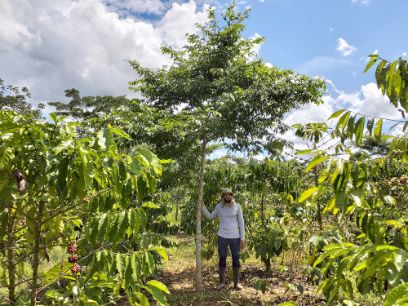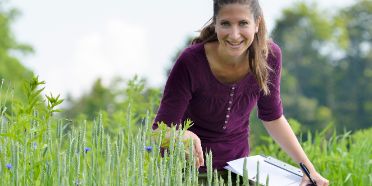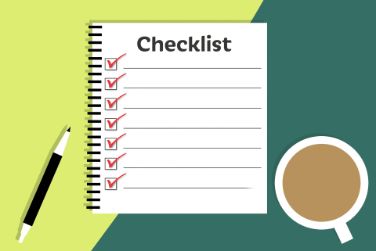- News
Study of shading impact on coffee robusta – The making of a successful publication
08.12.2020 Kevin Piato, a BFH-HAFL master’s student, has recently been published in the journal Agronomy for Sustainable Development. An interview on the findings of his meta-analysis and what it takes to successfully publish.

Kevin's eyes shine when he talks about his meta-analysis of the “Effects of shade trees on robusta coffee growth, yield and quality”. In October 2020 he received the exciting news that his paper had been accepted by the highly competitive peer-reviewed journal “Agronomy for Sustainable Development”. He is reaping the rewards of all his hard work. We had the chance to talk with him about his motivation to write and publish his research, the core findings of his analysis and the further application of his study in the context of Ecuador’s rainforest.
Tell us a bit about yourself. Why did you decide to do the master’s degree at BFH-HAFL?
I started off studying Agriculture in Geneva at the University of Applied Sciences and Arts of Western Switzerland (HES-SO/ HEPIA) focusing on special crops. I spent my pre-university work placement in a nature reserve in Ecuador, where I had my first contact with coffee plants. Since then, coffee production has been my main research area.
For my bachelor’ thesis I chose to go back to the Amazonian part of Ecuador to work with the National Institute for Agricultural Research (INIAP). The aim of the thesis was to find out how shade in agroforestry systems impacts the dynamics of pest and disease with robusta coffee plants and if we can reduce its development with the help of shade. The research focus was very specific and unique – there haven’t been any comparable studies in the Amazon. Therefore, I wanted to pursue this topic further by doing a master’s degree at BFH-HAFL and to continue collaborating with INIAP.
And this was the start for your paper. Congratulations! How would you explain your paper’s topic to a layperson in a few sentences?
This is the first meta-analysis dealing with the impact of shade on robusta coffee in agroforestry systems. The paper combines the results of over 30 studies examining factors such as yield, growth or quality and how they are affected by shade. One of the common results is that shade improves the growth of robusta coffee, but - to put it in simple terms - the positive impact of shade varies in the different studies. This is because it depends on underlying factors such as robusta clone, location as well as the age of the plant. Mostly, the studies investigated whether shade is good or not but they didn’t include trade-offs and interaction between the different factors. For example, on plants older than 16 years, shade had a more positive impact. We also looked at how the degree of shade affects the coffee plant. We found that shade reduces the “cup quality”, but only if shade is “excessive”, i.e. above 30 per cent cover. The paper shows all of these underlying complexities.
Why is the subject relevant?
More than 9 billion kilogrammes of coffee are consumed annually worldwide, mainly arabica and robusta. Previously, robusta was not so commonly used, since it was more bitter than arabica. Now processing and roasting factories have the technology to effectively mix the two varieties without changing the flavour. With the lower price of robusta coffee, its popularity is continuously growing and we’re expecting that in a few years the market share of robusta and arabica will be almost fifty-fifty.
Since robusta was previously not as widely used, we have a lack of research on the effects of shade on robusta. I therefore decided to develop the meta-analysis to compile the few studies that have been done.
Further, in the Amazon the problem of deforestation is very acute. Every week you could see parts of the forest disappearing. What the study showed is that it’s very important to keep trees inside the coffee system to reduce the pressure on the forest and improve the sustainability of the coffee system.
Have you faced challenges writing the paper?
During the writing of the paper, the main challenge was staying mentally resilient in going through the long revision process and tight deadlines for final revision. I did not expect that our first submission of the paper would be accepted by the journal, and that the process to publish would take so long. I had to take several revision steps to progress through the entire editorial process. Despite all the time and effort required to go through these revisions, there is never a guarantee that the paper will be published. In the revision process, I needed to address all the remarks provided by all the reviewers and and not all the reviewers necessarily agree. This means that in some cases I had to find and propose compromises and trade-offs.
I was not the only author of the publication, so in the process I also had to ensure that all the co-authors were able to provide inputs and that we were aligned on the revisions. This is big personal responsibility.
Kevin Piato’s advice for those who want to publish their work
First, before publishing you need to know that the journals receive over 1,000 papers each year and they make the initial decision about your paper in 3-5 minutes. With this information in mind, you need to:
- want to publish and prepare the paper for publication before you begin to write;
- identify a gap in the existing literature and knowledge – your paper needs to have a high level of novelty;
- formulate a very specific theoretical hypothesis;
- select the right journal that fits your hypothesis and topic;
- read the journal: each journal has very specific requirements in terms of style, word count, number of figures, etc.
After you wrote this paper, which provides a meta-analysis review of the topic, you went on to collect data to support your research in Ecuador. Could you describe for us the experience in Ecuador, and any insights that you were able to gather locally, and how your meta-analysis helped with the field work?
During the field trials that followed the submission of the meta-analysis, the main challenge was the corona virus. For four months in Ecuador I lived with many of the COVID-19 restrictions. At the beginning, I was worried that I would have to come back to Switzerland without any data. It was also difficult to focus on the research as I was also concerned for my family in Switzerland. My local colleagues provided me with incredible support the entire time – they had a lot of enthusiasm and motivation, and no fear of the situation.
Another factor is the harsh climate in the Amazonia. It was the second time for me working there, but it was still very physically challenging. We had to work with 85% humidity in more than 30°C degree temperatures. While taking some of the measurements, I would sometimes lose motivation, but my colleagues were a great help. They would always point out the importance of the work.
The field trials were never boring. Each day we faced different challenges, and different new experiences, like encountering snakes or monkeys while we were in the field. Each day was an adventure. The real motivating factor was the beauty of the biodiversity in Amazonia. It gave me strength to look for a way to preserve this biodiversity through my work.
We can say that you have become a kind of expert in coffee production in the Amazon. Would you like to follow this path?
I would like to continue to pursue applied research in tropical crops. I would like to keep contributing to this field as well as publish another paper based on the data I collected during my research in Ecuador, to share the knowledge with scientists who did not have access to this data. I would like to apply for a place on a PhD programme to continue my research that I started with my master’s thesis. I feel that my master’s studies at BFH-HAFL have prepared me well for doing a PhD.




